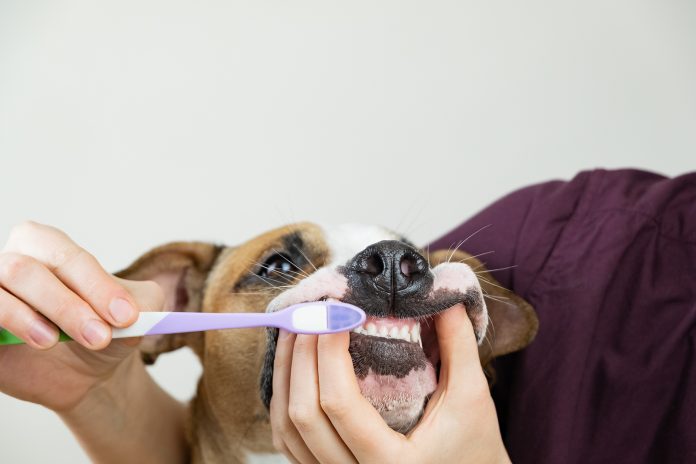
Dental care is one of the most important aspects of pet health. 75-85% of dogs and cats over the age of three, have sustained dental diseases. It’s now commonly acknowledged that dental and oral diseases can be a persistent source of pain and discomfort in a pet’s life. Our pets are masters of hiding their pain, and will typically only show us signs of pain when it is already well out of their control.
COMMON SIGNS OF DENTAL DISEASES
- Bad breath
- Difficulty in eating food
- Drooling
- Pawing the mouth
- Swollen face
- Refusing to eat food
- Yelping while eating food
THE FACTS
- Dental diseases are always progressive, and can lead to gingivitis, periodontal disease, and ultimately tooth loss
- Adequate oral and dental care for our pets is solely dependent upon us
- Infrequently brushing teeth, for example, only during grooming appointments, can create a false impression of pet oral care
- Dental fractures are common due to chewing on raw hide
WHAT CAN YOU DO?
- Doing nothing for your pet’s oral care is not an option
- Tooth brushing is the gold standard to preventing accumulation of plaque and tartar
- Hard food is helpful, but alone cannot prevent plaque and tartar formation
- Dental chews work mechanically to control dental diseases, and may be helpful in conjunction with regular dental care
Dry food is generally better for dental hygiene than wet food. While cleaning teeth with simple gauze is easiest, using a toothbrush is the most effective method. It’s important to start pet dental hygiene practices such as, brushing their teeth at a young age to get them accustomed and comfortable with the practice. Once a day, every other day, twice a week (or, once a week) – whatever you can do, do it. Many animal hospitals offer free consultation for dental exams, or may offer a discounted visit. Remember, our pet’s dental care is solely up to us.











 20 lucky winners will win $500 each in prizes totaling $10,000.
20 lucky winners will win $500 each in prizes totaling $10,000. 